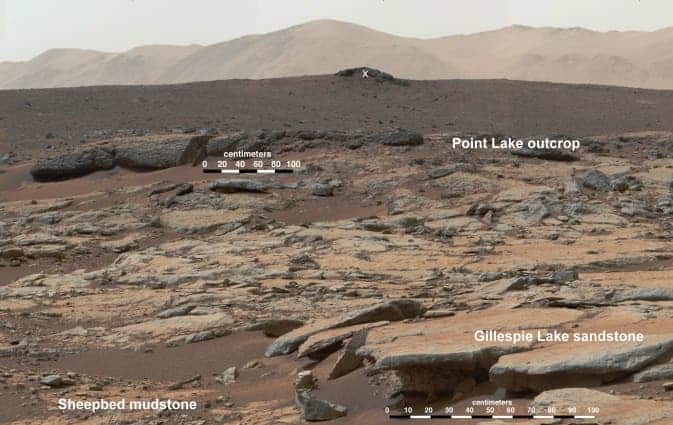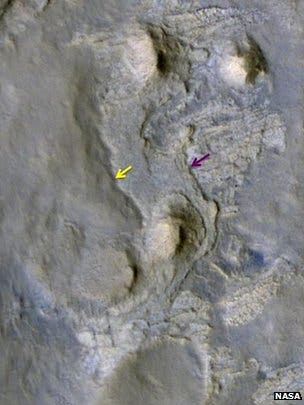
Image Credit: NASA/JPL-Caltech/MSSS
NASA recently announced that it will be tasking the Curiosity rover, currently exploring Mars’ surface at the Gale Crater, with a new mission that wasn’t included in the initial plan. After Curiosity provided some of the most fantastic scientific clues in recent history when it found evidence that Mars could have supported certain kind of microbes, NASA now wants to take things a bit further by drilling sedimentary rocks in search for organic molecules – telltale signs that Mars may have once fostered life.
“If you go back to rocks that are billions of years old on Earth, for soft-bodied, single-celled micro-organisms, it’s very, very rare to find an actual fossil of the micro-organism,” said Prof John Grotzinger, a Curiosity scientist, at the American Geophysical Union (AGU) Fall Meeting in San Francisco.
“What you usually find, and it’s also quite rare, are organic remnants of the molecules. So, the cell wall breaks down, it fragments and it leaves behind large organic molecules that betray the existence of life,” he explained.
“The trick has always been to find these ‘windows of preservation’ where everything went just right and you peer beneath all the complexity to actually find something that’s a bit of a needle in a haystack.”
Alien life on Mars
Life on Mars becomes an ever stronger possibility by the day. Previously Curiosity found evidence of past flowing water on Mars, complex chemistry in soil samples and most recently NASA announced the rover had gathered significant evidence that suggests an ancient lake used to be inside the Gale Crater. Breathtaking science made millions of miles away – we truly live in a wonderful age. We won’t ever be able to tell for sure that Mars once hosted life, though, simply because any trace of hypothetical life may have left on the red planet would be extremely unlikely to find.

If Curiosity discovers organic molecules and compounds, however, the find would boast current alien life exploration efforts. The challenges are numerous, though, as one might imagine. Because Mars has such a thin atmosphere (less than 1% as thick as Earth’s), solar radiation has devastating effect and any exposed organic molecules, if any ever present there, would undergo significant transformations. Finding organic chemistry itself isn’t impossible, however.
Hunting for organics
Since its stay on Mars, Curiosity has gathered a fabulous amount of data and has helped scientists obtain a better picture of how the red planet truly is like. One of the key insights NASA researchers have garnered is related to solar radiation. Scientists are now pretty confident of the timescales over which organic chemistry could withstand the radiation assault if exposed near the surface. Second, Curiosity has done a fantastic job in dating rock samples from Gale Crater, hinting that erosion had naturally exhumed rocks buried deep for hundreds of millions if not billions of years. Coupled together, these insights suggest that it is possible, though not extremely likely, to find traces of organic molecules.
With this in mind, the number one priority at the moment is for Curiosity to start drilling at new rock outcrop in Gale Crater called KMS9. It is here that the NASA scientists have identified the most likeliest surfaces and rock formation only recently exhumed by powerful martian winds.
Curiosity scientist Prof Ken Farley, from Caltech, said: “Our observation gives us a strategy for minimising the cosmic ray dose by specifically looking at scarps that are exposing rock newly to the surface of Mars, and we believe we can get surface-exposure ages that might be about a million years. And in such rocks we expect that the organic preservation will be high.”
It’s important to note that even though traces or organic molecules themselves are found on Mars, this still wouldn’t mean that Mars once fostered life, since there are numerous non-biological processes that produce organics. Still, this doesn’t mean that such a moment would be any less sweeter.
“Everybody wants to know – did life ever exist on Mars? How are we going to address that? Well, we need to go and look for biosignatures, or things that we think are evidence of life. Organics are part of life and therefore organics are part of that story,” said Dr Jennifer Eigenbrode from Nasa’s Goddard Space Flight Center.






